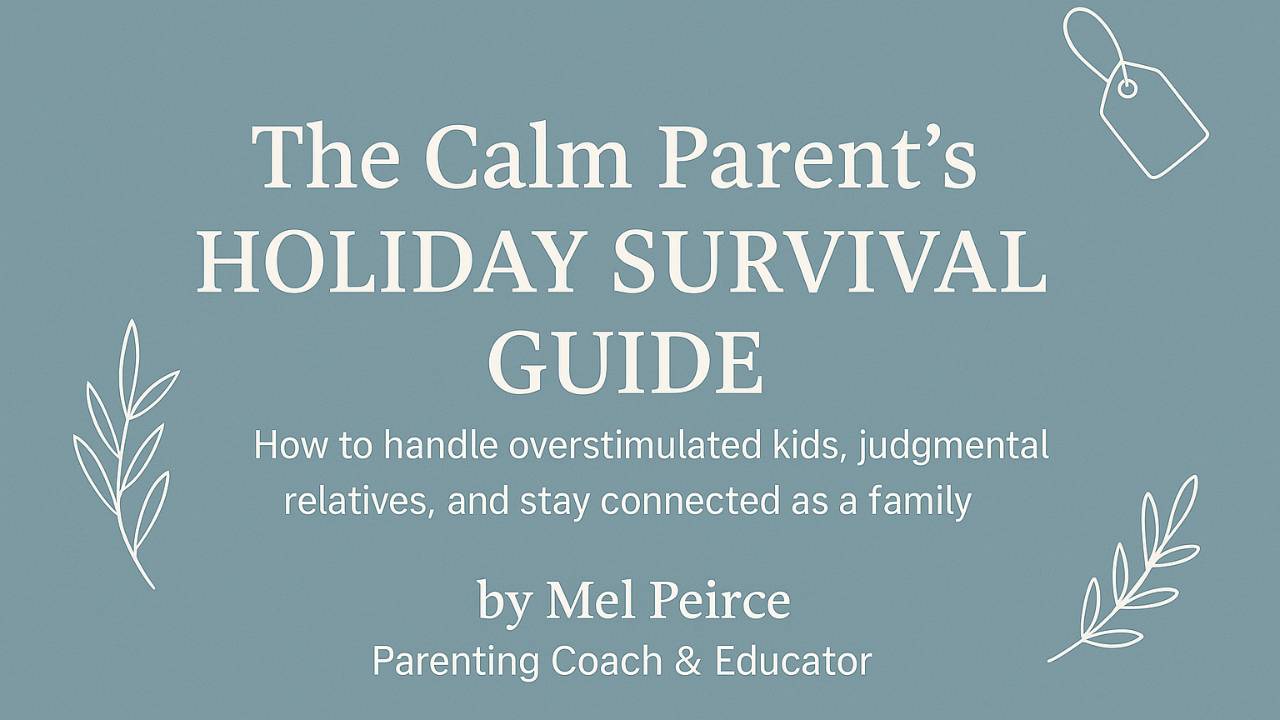How to Set Your Child Up for a Strong Start to the School Year
Aug 23, 2025
The beginning of a new school year brings change for every student, new teachers, different classmates, and shifting social dynamics. While some kids adjust quickly, others, especially those with developmental, social, or academic challenges, may find this transition overwhelming.
One of the most effective things you can do as a parent is to proactively help your child’s teacher understand who they are. Not just how they learn, but what lights them up. That’s why I recommend creating a simple "Meet My Child" overview to share with your child’s teacher at the start of the school year.
It’s a powerful tool that sets the tone for collaboration and can make a big impact on your child’s classroom experience.
Why This Guide Matters
Teachers are juggling a lot at the start of the school year. By offering a quick, clear snapshot of your child, you’re helping them get up to speed faster, especially on the little things that aren’t in school records. First impressions matter, and if a child feels misunderstood or unsupported early on, it can affect their confidence, motivation, and even their behavior for months to come.
As a mom of a child with ADHD, I can tell you firsthand how valuable this kind of communication can be. For years, I touched base with my son’s teachers daily. When I first contacted them at the beginning of the year, I found that giving them a quick snapshot of my child was one of the best ways to build understanding and support right from day one.
How to Create a One-Page “Meet My Child” Snapshot
Keep it short (one page max) and easy to read. You want this to be something the teacher can skim and refer back to as needed. Here’s what to include:
✅ 1. What Your Child Loves
Sharing your child’s interests helps the teacher connect with them as a person, not just a student.
Include things like:
- Favorite subjects or hobbies (e.g., “Ava loves math and doing science experiments at home.”)
- Favorite activities (e.g., “Liam is passionate about soccer and plays goalie on his rec team.”)
- Favorite characters or themes (e.g., “Maya is obsessed with dinosaurs, Moana, and Taylor Swift.”)
A shared interest or quick reference to something your child cares about can be the bridge that builds trust and helps ease anxiety, especially in the early days of school.
✅ 2. Your Child’s Strengths
Especially if your child faces challenges, it’s important to lead with what they do well. You’re helping the teacher see your child through a positive lens from the beginning.
Here are a few examples:
- “Jacob is incredibly curious and loves asking questions.”
- “Ella has a creative mind and tells the best stories.”
- “Leo is very empathetic and is the first to notice if someone’s upset.”
Highlighting strengths not only boosts your child’s self-esteem but also reminds educators to tap into what works for your child, not just what’s difficult.
✅ 3. Challenges and What Helps
This is where you gently share any areas of difficulty, along with strategies that have helped in the past.
Stick to 3–4 specific examples like:
- “Sofia struggles with transitions. Giving her a 5-minute warning before switching tasks helps her feel more prepared.”
- “Ethan finds it hard to stay seated for long periods. Last year, his teacher gave him movement breaks, which made a huge difference.”
- “Amira gets overwhelmed in loud environments. Having a quiet space to regroup helps her reset.”
You’re not just describing problems, you’re offering solutions that are grounded in real experience.
✅ 4. Outside Support and Services
Let the teacher know if your child receives support outside of school (like speech therapy, OT, tutoring, etc.). This helps the teacher coordinate with those efforts and better understand your child’s needs holistically.
For example:
- “Noah works with a reading tutor twice a week.”
- “Lena receives occupational therapy to help with fine motor skills.”
- “We’re working with a counselor to support Sam’s social-emotional development.”
This communicates that you’re actively involved and creates space for partnership.
Bonus Tips for Sharing the Guide
- Email it the week before school starts or bring a printed copy to a meet-the-teacher night.
- Be positive and collaborative in your tone. Teachers appreciate parents who come alongside them as teammates.
- Offer to follow up once the school year is underway to check in on how things are going.
Final Thoughts: Connection Comes First
Your “Meet My Child” guide is more than a set of bullet points — it’s a bridge. You’re helping your child’s teacher connect faster, support more effectively, and see your child for who they truly are, not just the challenges they may bring.
When teachers start the year with insight and empathy, and when kids feel understood from day one, everything else gets a little easier. And remember: small steps at the beginning of the year can lead to big wins all year long.
And, to help make things easy, I have a Meet My Child template that you can download and print! Click here to grab your copy to help your child’s teacher quickly learn everything they need to know to support and connect with your child.
Join the Confident Parenting Community.
Receive the latest tips and tools from the Confident Parenting Toolbox to support your kids
(and yourself!) with today's challenges so your whole family can thrive.
We hate SPAM. We will never sell your information, for any reason.


